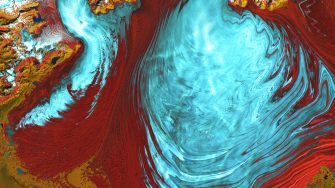
Overview
The UNSW Geographic Data Analysis (GEOS3821) and Advanced Geographic Information Systems and Science (GEOS9017) course explores a toolbox of conceptual approaches and methods to model and analyse complex, and often non-deterministic geographic problems. This course is offered in Term 1 as an intensive course to fast-track your learning on the practical applications of geographic data.
The field of Geographic Information Systems (GIS) has expanded considerably over the past decade, and the world has become richer in digital geographic information. Vast amounts of geographic and geospatial data are routinely collected, from satellites, remote sensing, 3D landscape visualisation tools and more.
This course explores a true enabling technology for the natural sciences in addition to a rich source of computational and representational challenges for the computer sciences. Throughout the course, you’ll explore a range of GIS data and spatial data analysis approaches via a disparate selection of real-world applications, using a range of geospatial analysis tools.
Spatial analysis is technical in nature, and therefore, requires the application of GIS software. However, this course is not only about using software, but it also involves the education of the principles of GI science and spatial analysis. While over the years, the software may change, the principles stay the same.
Term offering: Term 1
Course attendance: In person
Level: Undergraduate - Third Year
Discipline: Geography
Course code: GEOS3821, GEOS9017
Course breakdown
The Geographic Data Analysis course involves a combination of lectures and laboratory workshops. The main course objective is to provide you with experience in the analysis of spatial data. Through this approach, you’ll be better equipped to deal with the enormous variety of different applications encountered in the workforce.
Upon completion of the course, you’ll understand the following:
- how and when you should use spatial analysis approaches to address geographic problems
- the advantages and limitations of this analysis.
Conditions for enrolment
Assumed knowledge of GIS principles and ArcGIS 10.
Career opportunities
Roles in GIS and remote sensing span the natural and built environments. Any position that requires geospatial analysis needs people with these skills. Through the Bachelor of Advanced Science (Honours)/Computer Science, you can further your study and specialise in a range of fields.
Relevant roles
- Geospatial scientist
- Analyst
- Software engineer
- Surveyor
- Business systems analyst
- Computer programmer
- Computer scientist
- Entrepreneur
- Project manager
- Data scientist
